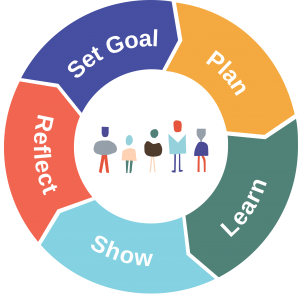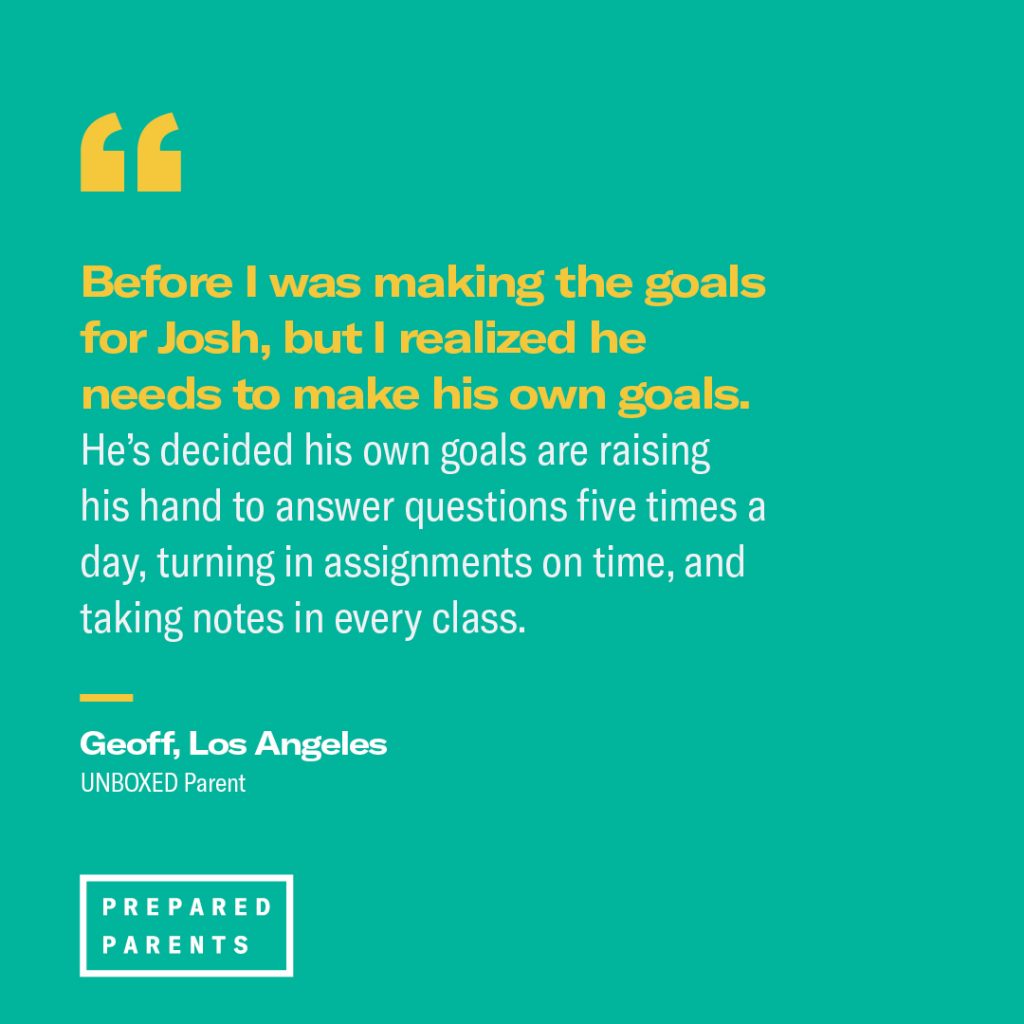A kid who knows how to set goals is taking control of how they learn and will:
- Stay focused,
- Be more creative, and
- Ask for help only when they really need it.
We call it Self-Directed Learning; it’s a Habit of Success every kid can build with practice. Ultimately, it’s the process that’s the important part, and that is where the Self-Directed Learning Cycle comes into play. Complete the steps below using sticky notes, a whiteboard, a journal or a notebook, or a plain old sheet of paper.
What’s the Self-Directed Learning Cycle?
The Self-directed Learning Cycle is a 5-step process a kid can use to:

- Set a Goal for what they want to accomplish or achieve. Make it detailed, achievable, and time-sensitive. (Goal: This week, I will read for 30 minutes every day.)
- Plan the actions they need to take to get there. (Plan: Set up a time to read every night for 30 minutes.)
- Learn what you need to know. (Learn: Do the reading.)
- Show what you’ve learned. This’ll help you lock and load that knowledge into place. (Show: Talk about what I’m reading at the dinner table.)
- Reflect on how you learned, not what you learned. Remember, it’s the process that’s important. What helped? What was a waste of time? (Reflect: Figure out how I got the most out of my reading.)
What’s the Key Takeaway?
The 5 steps of self-directed learning will help a kid with everything from planning and cooking a meal, cleaning and organizing their room, and completing that book report on Charlotte’s Web. It’ll be a habit they’ll use throughout life because it works just as well when they’re ready for the college search and the job application process.
Goal-setting is an important habit to develop your child’s motivation, sense of accomplishment, and self-awareness. It is a key part of Self-direction, which is one of the top three habits (along with Curiosity and Purpose) named by Dr. Brooke Stafford-Brizard that set kids up for success in school and in life. It is an essential skill that helps people of all ages pursue interests, develop new skills, find purpose, and contribute to the world around them.
Set Goal and Plan of Action
Your kid can record a personal goal and make a plan to achieve it. It may take a minute for your kid to set their goal and develop their plan of action. Gently but firmly, encourage your kid to take charge of their goal. Consider showing them how you set your own goals.
Display their goals prominently as a reminder of what they plan to get done. Remember, kids can be sensitive to pressure. Perhaps a gentle reminder at the dinner table instead?
We set goals every day, in big and small ways. But did you know that some goals are more likely to be successful than others? It’s the ones that are detailed, achievable, and time-sensitive. For example, a goal could be: I will practice the skill of self-control by trying to work for 15 straight minutes without any distractions. I will meet this goal within three days.
Shift from Plan to Action
Your kid can tackle the plan a little at a time. Making progress on each leg of the journey will motivate them to keep going.
Remember to check-in to see how your kid is doing. Do they have everything they need? If they run into obstacles—and at times they will—remind them there are power behaviors to help get them through!
Celebrate Progress
Take a look at how your kids achieved their goals. Have them share what they learned and how they learned it. What worked? What didn’t? Take a moment to reflect on this entire process together before setting a new goal. How will your kids refine their goals the next time?
Celebrate your kid’s wins — big and small — and honor their progress by asking questions that will help them reflect even more on the process of goal-setting.


